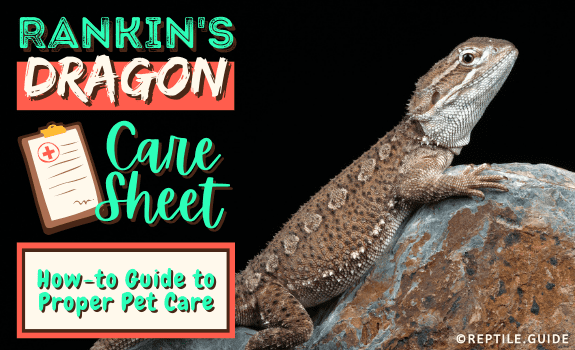Before you bring home a Rankin’s dragon, it’s essential to understand their husbandry needs.
If you’re wondering how to care for these mini dragons, you’ve come to the right place!
We answer all your questions about Rankin’s dragon care, including what they eat, how much they cost, how to set up the best enclosure, and potential health problems.
In This Article
Do Rankin’s Dragons Make Good Pets?
Yes, Rankin’s dragons make great pets!
These pygmy bearded dragons are interactive and easy to care for. Rankin’s keepers say they have big personalities.
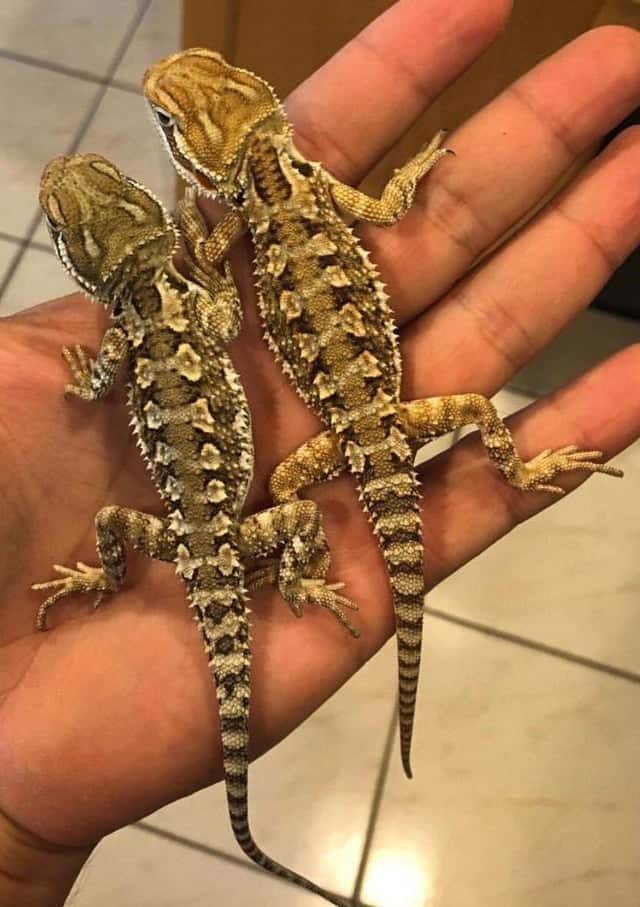
Image credit: u/arashikage01 (via Reddit.com)
Buying a Rankin’s Dragon
Rankin’s dragons cost between $100-$400 and average $200.
The best places to buy them are from private breeders at reptile expos or online. You can occasionally find them in pet stores.
Your new reptile should be active, alert, and healthy-looking.
Sexing a Rankin’s Dragon
Sexing a Rankin’s dragon is the same as sexing bearded dragons.
Males have two hemipenal bulges on each side of the base of their tails. Females only have one bump centered above their vent.
If it’s difficult to tell, try shining a flashlight through their tail. A male’s testes will appear in a dark “U” shape. A female’s uterus is more of a box shape.
Rankin’s Dragon Enclosure
Size and Type of Enclosure
Your enclosure should be at least 48″x24″x24″, or 40-gallons, for a single Rankin’s dragon.
The enclosure needs to be well ventilated to keep humidity levels down and well insulated to retain heat.
These PVC and aluminum enclosures are durable, customizable, and perfectly suited for Rankin’s dragons.
Substrate
Substrate is the flooring of your dragon’s enclosure.
Choose substrate based on what’s easiest to maintain and safest for your pet.
There are several substrate options for Rankin’s dragons:
- Shelf liners – Rubber shelf liners are easy to clean, affordable, and safe.
- Reptile carpet – Terrarium carpet liners are safe and customizable to your enclosure, but they aren’t the easiest to clean. We suggest having more than one to replace the soiled one while you wash it.
- Ceramic or slate tiles – Tile is safe for your dragon, attractive, and easy to clean. A bonus of tile is that it will help keep your dragon’s nails short.
- Sand/soil/clay mixtures – This substrate has a more natural look and allows for natural behaviors like digging. It requires more upkeep than other options.
- Newspaper and paper towels – Paper bedding doesn’t look the nicest, but it’s cheap, easy to maintain, and safe.
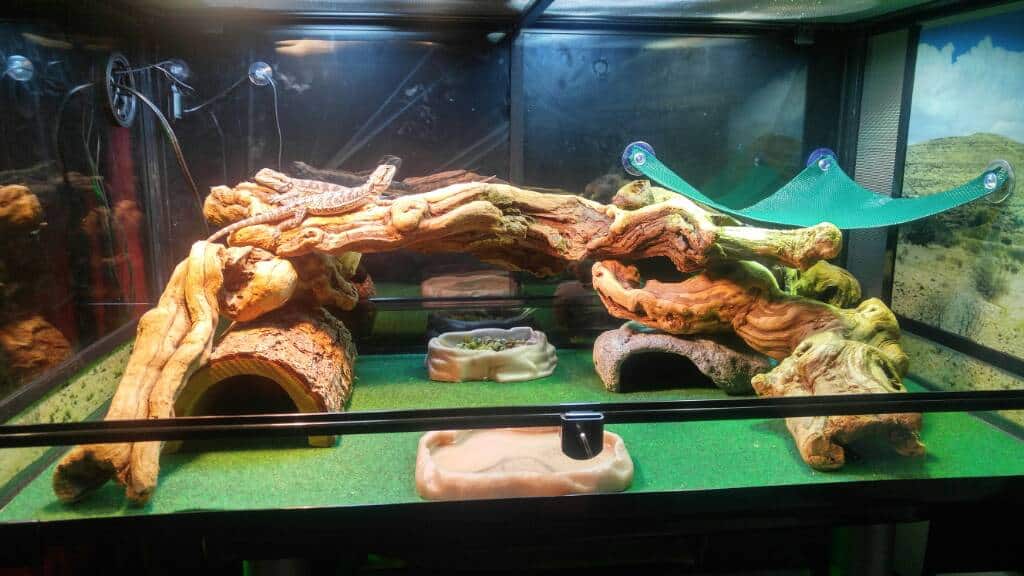
Image credit: Jasonbasler4 (via beardeddragonforum.com)
There isn’t a consensus among Rankin’s keepers on what substrate is best. Loose substrates can be challenging to maintain and cause impaction if swallowed.
Finding the best substrate for you and your pet’s needs might take some trial and error.
Substrates we don’t recommend:
- Wood chips
- Walnut shells
- Alfalfa pellets
- Calcium sand or play sand
These materials can harbor bacteria, and your Rankin’s may accidentally or intentionally ingest them.
Some options are safer than others.
But the only way to completely avoid impaction is by using non-particle substrates, like liners or tile.
Lights and Heating Sources
Rankin’s dragons need a temperature gradient in their enclosure.
Keep the cool side of the enclosure around 80-85°F.
Their natural habitat is hot and dry. Rankin’s spend a lot of time basking in the sun.
The warm end and basking area should be 100-110°F. You can achieve this temperature with a basking light and heating pad with thermostats.
Place thermometers on both ends of the enclosure to monitor temperatures.
Leave the lights on for 10-12 hours a day. The enclosure should be completely dark at night to give your dragon a distinct day-night cycle.
Your enclosure can drop into the low 70s at night. Use a ceramic heat emitter to keep it warm enough without giving off light.
UVB lighting is essential for your Rankin’s dragon’s health. UV rays help them synthesize vitamin D3 and absorb calcium.
A 10-12% UVB bulb should cover at least two-thirds of the enclosure.
UVB bulbs lose their effectiveness over time, so you’ll need to change them every 6-12 months to keep your reptile healthy.
Check out our selection of the best UVB lights you can consider for your beardie’s enclosure.
Humidity
Rankin’s don’t need high humidity levels.
Keep your enclosure’s humidity levels around 40%.
If it’s too dry, you can increase the humidity by misting the enclosure more often and adding live plants.
Don’t overdo it. An environment that’s too humid can cause bacterial growth and respiratory infections.
Ways to keep your humidity levels low:
- Have an enclosure that is well ventilated.
- Use substrates that don’t retain moisture.
- Keep the water bowl on the cool end of the enclosure.
The best way to monitor humidity levels is with a hygrometer.
Hides and Decor
Rankin’s dragons love to climb.
Give them several climbing options like pieces of wood, rocks, vines, and hammocks.
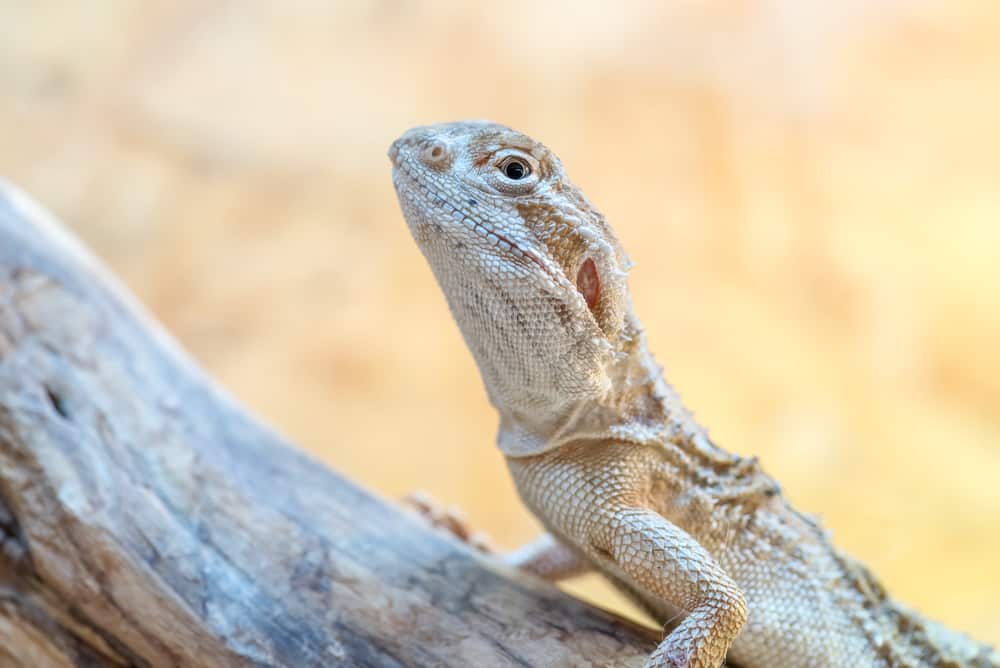
Place a sturdy climbing structure under the basking spot to help them thermoregulate.
Slate rocks make great climbing and basking areas and help keep their nails short.
Live and fake plants create a more natural environment for your dragon. They provide shade and hiding areas.
Rearrange the furniture in your Rankin’s enclosure to provide mental stimulation and environmental enrichment.
Add backgrounds to an all-glass enclosure to help them feel less exposed and more comfortable.
Rankin’s Dragon Diet
Rankin’s dragons are omnivores. Adults’ diets should consist of 40% insects and 60% vegetables.
A juvenile’s diet should be closer to 80% insects.
Crickets and locusts are the best feeder insects for your Rankin’s.
While other insects are safe for them to eat, they’re either difficult to digest or high in fat. Use them as occasional treats.
Insects your Rankin’s dragon can eat:
- Locusts
- Crickets
- Waxworms
- Mealworms
- Dubia roaches
- Black Soldier Fly Larvae
Adults need insects three times a week.
Babies need insects every day.
Your Rankin’s dragon needs a varied diet of veggies, fruits, and leafy greens to keep it healthy.
Fruits and veggies your Rankin’s dragon can eat include:
- Kale
- Melons
- Squash
- Grapes
- Carrots
- Berries
- Bok choy
- Dandelion
- Tomatoes
- Bell peppers
- Peeled apple
- Strawberries
- Collard greens
- Romaine lettuce
- Peeled cucumber
Feed as many vegetables and greens as your dragon wants.
Use fruit as a healthy treat. A little bit of fruit is a great way to get your dragon interested in their salad.
Foods to AVOID:
- Meat
- Celery
- Spinach
- Avocado
- Mushrooms
- Citrus fruits
- Iceberg lettuce
- Wild-caught insects
Feed your Rankin’s in a food dish to help reduce the risk of impaction.
Finely chop fruits and veggies.
Their food should be no larger than the space between their eyes.
Supplements
Calcium supplements and multi-vitamins make up for any essential nutrients your Rankin’s might not be getting from its diet.
You can get calcium supplements with or without vitamin D3. If you’re using a UVB bulb, you don’t need vitamin D3 supplements.
Get calcium supplements without phosphorus. Too much phosphorus can block your dragon’s ability to absorb calcium into the bloodstream.
Lightly dust their insects with calcium powder 2-3 times a week for adults and 4-5 times a week for juveniles.
Give multi-vitamins once a week for adults and twice a week for juveniles. Use multi-vitamins on days that you aren’t dusting with calcium.
Water
Always provide your Rankin’s dragon with fresh water daily. You might not see them drinking from it often, but it’s important to give them the option.
They’ll also enjoy soaking in it. Look for a large, shallow, sturdy bowl that can fit their whole body.
Keep the water bowl on the cool side of the enclosure to decrease humidity levels.
Rankin’s Dragon Behaviors
There are several behaviors you might see in your new lizard that can be concerning for a first-time keeper.
Behaviors most frequently asked about:
- Digging – Digging is a natural behavior for pygmy dragons. There are several reasons they could be digging.
- It could be a sign of brumation.
- They could be feeling exposed and they’re looking for a place to hide.
- They’re looking for a place to cool down. In the wild, they hide in burrows to regulate their body temperature.
- Females dig when they’re looking for a place to lay eggs. This behavior takes place even with females that aren’t breeding.
- Mouth open – Mouth gaping is a natural way for them to thermoregulate. They sit with their mouths open to release excess heat.
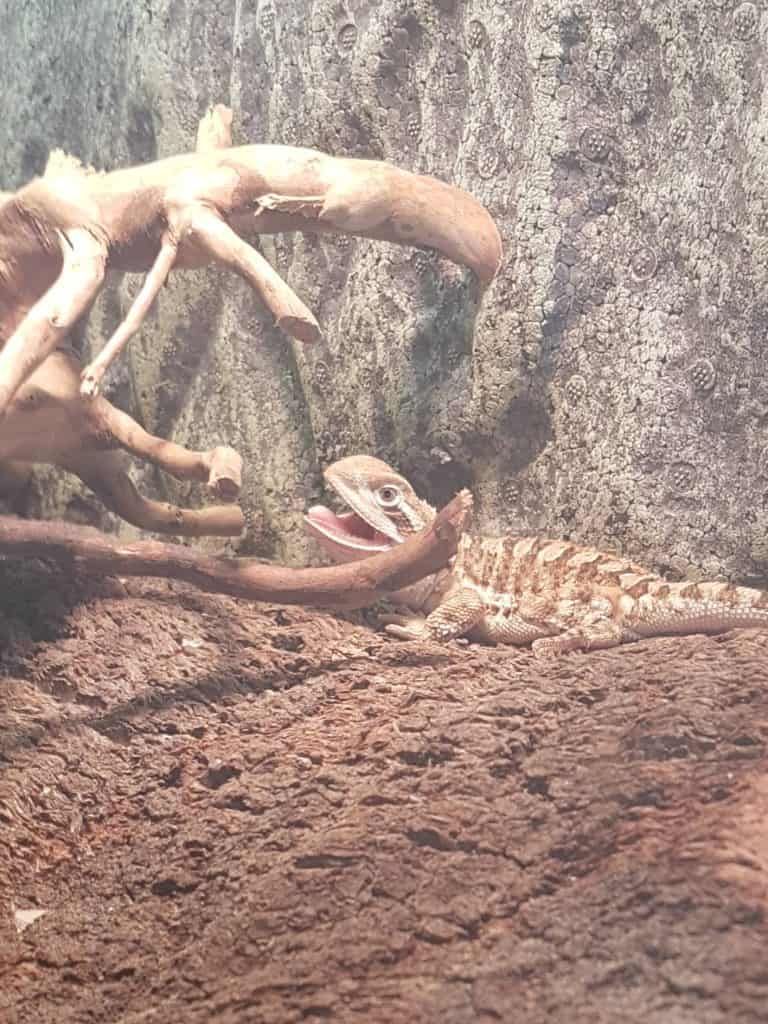
Image credit: u/Nadhras (via Reddit.com)
- Glass surfing – Trying to climb the glass, or glass surfing, can be a sign of stress.
- It’s possible they’re bored and need more attention or enrichment.
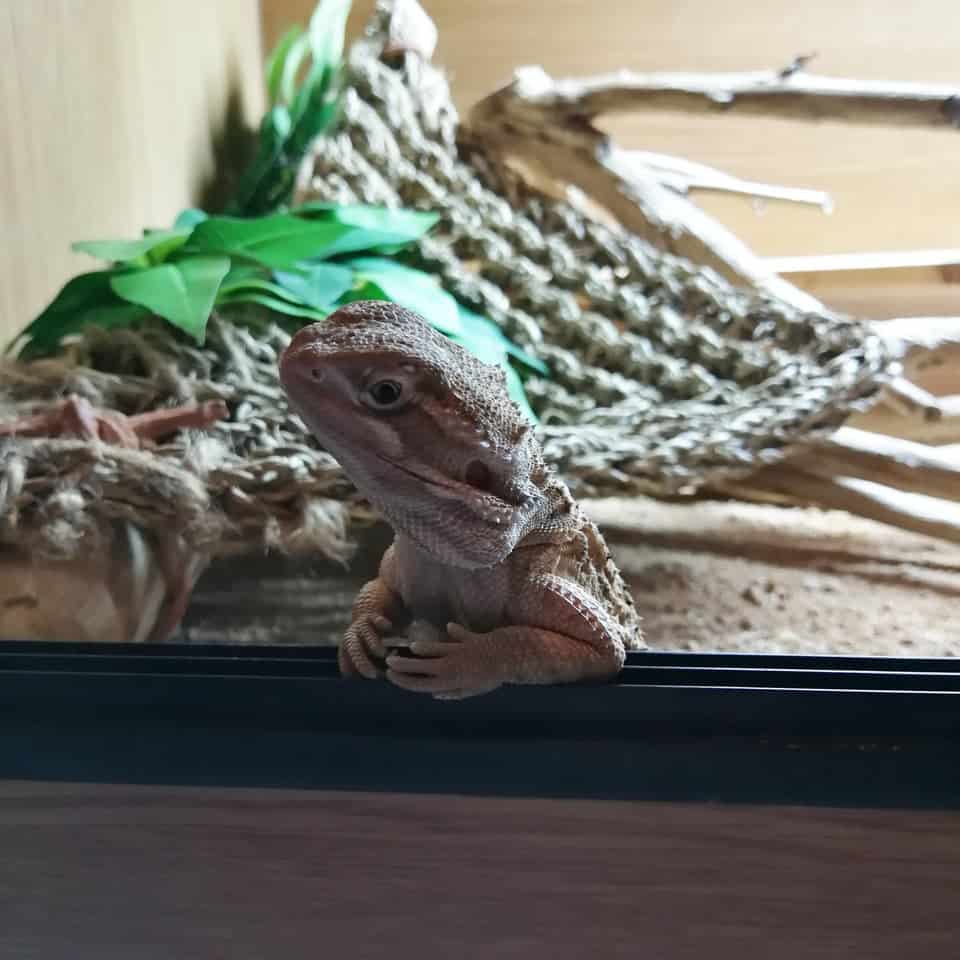
Image credit: u/jxduss (via Reddit.com)
-
- Enclosures that are too large without enough hides can be overwhelming. An enclosure that’s too small is also stressful.
- If their enclosure doesn’t have a proper temperature gradient, they might be looking for a place to cool down or warm up.
Potential Health Issues
Impaction
Impaction is a blocked digestive tract.
It’s caused by overfeeding, swallowing indigestible materials, or consuming food that’s too large.
Symptoms of impaction:
- Lethargy
- Loss of appetite
- Lack of bowel movements
- Loss of mobility in back legs
A warm bath and a massage can help with minor cases of impaction. More severe cases require a visit to the veterinarian.
Yellow Fungus
Yellow fungus disease (YFD) is highly contagious and often fatal.
Poor husbandry practices or exposure to an infected animal can cause YFD.
Symptoms of YFD:
- Wounds
- Poor appetite
- Restlessness
- Discolored and crusty scales
- Excessive shedding or sheds that look irregular
A thorough cleaning schedule and good hygiene will help avoid YFD. Wash your hands before and after handling your Rankin’s dragon.
Contact your veterinarian immediately if you suspect your pet has YFD. The best chances of survival are if you can catch it early.
Metabolic Bone Disease
Metabolic bone disease (MBD) is a potentially life-threatening disease caused by an imbalance of calcium, phosphorus, and vitamin D.
Symptoms of MBD:
- Limping
- Trembling
- Weakness
- Bowed legs
- Decreased appetite
- Swelling of the mouth, face, or back legs
You can treat minor cases with husbandry improvements More severe cases require intensive medical treatment.
Feed your reptile a balanced diet with calcium and vitamin D supplements and use UVB bulb to avoid MBD.
Pygmy Bearded Dragon Background
A Rankin’s dragon goes by many names. It’s also called a pygmy bearded dragon, black soil bearded dragon, dumpy dragon, and Lawson’s dragon.
Pogona henrylawsoni get their name from the Australian writer Henry Lawson.
The genus Pogona includes seven other species of bearded dragons.
Different Pogona species have unique ranges, only slightly overlapping each other in some locations.
A Rankin’s dragon looks exceptionally similar to a dwarf bearded dragon (P. minor), but they live in completely different habitats.
Rankin’s dragons live in hot, dry, rocky areas of Queensland, Australia.
Their average lifespan is 6-10 years with good husbandry practices. They can live up to 15 years.
Adults typically reach 10-12 inches in length. Females are usually larger than males.
Can Rankin’s Dragons Live Together?
Yes, Rankin’s dragons can live together.
They live in small colonies in the wild.
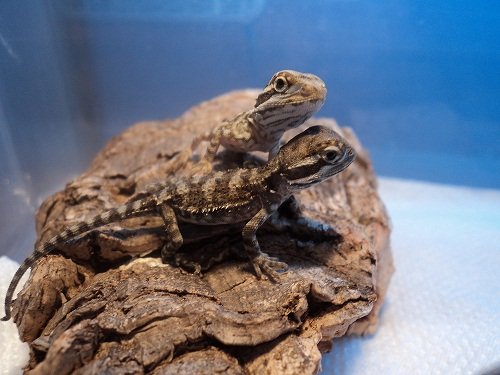
Image credit: Ben86 (via reptileforums.co.uk)
Males may be territorial. It’s easiest to pair two or three females together.
You can put one male with two females, but there’s a chance of breeding.
Keep in mind that increasing the number of animals you have means you’ll need a larger enclosure. They should have enough space to avoid each other if needed.
Do Rankin’s Dragons Hibernate?
Rankin’s dragons brumate.
Brumation is a reptile’s version of hibernation. They go into an inactive state during winter.
During brumation, a reptile lowers its heart rate, body temperature, and respiratory rate.
It’s a natural process that allows reptiles to survive colder months when there are fewer resources available. They live off of fat reserves during this time.
Rankin’s dragons don’t always brumate in captivity. They shouldn’t have a reason to, but sometimes it happens anyway.
Signs of brumation:
- Hiding
- Sleeping more
- Decreased appetite
- Lower activity levels
- Decreased defecation
It’s normal for first-time keepers to be nervous about brumation. Seeing your Rankin’s dragon stop eating and sleeping all the time can be unsettling.
Don’t worry! Brumation won’t hurt them.
If you’re positive they’re brumating, you can gradually reduce their heating and lighting until it’s completely off. This change replicates a more natural environment for brumating.
Only offer them food if you see them out of hiding. It’s normal for your Rankin’s dragon not to eat during this time.
When brumation is over, your dragon will return to normal, and so can your care routine.
They should lose little to no weight during this time.
Contact your veterinarian if you have serious concerns about your pet’s health.
Differences Between Rankin’s Dragons and Bearded Dragons
Rankin’s dragons are the smaller cousins of bearded dragons. They’re in the same genus Pogona.
Central bearded dragons (Pogona vitticeps) are the most common species kept as pets.
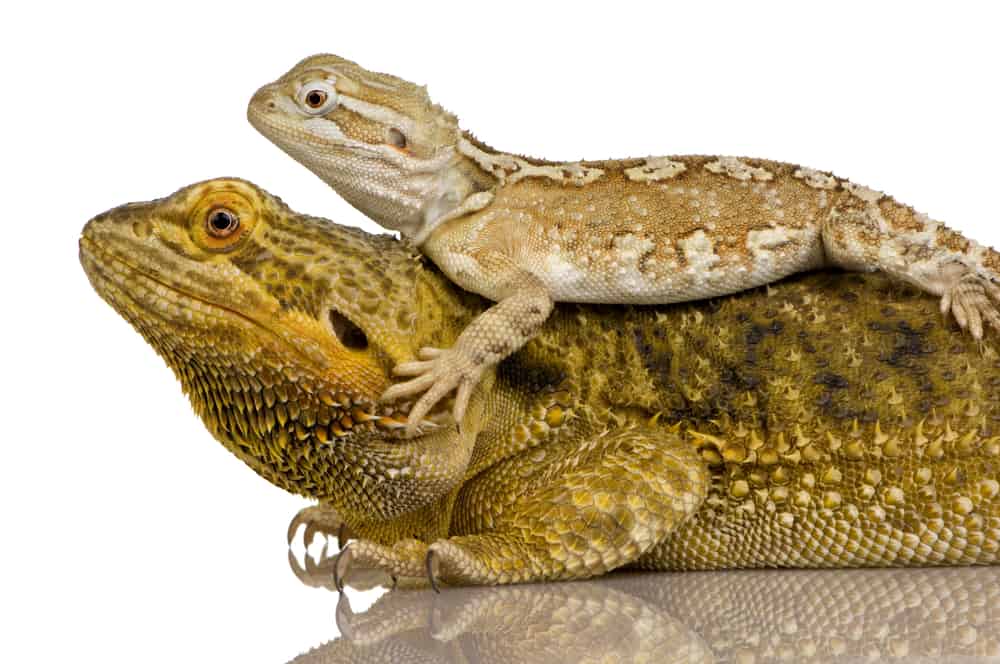
Like Rankin’s, they are native to Queensland, Australia.
They look similar but have a few key differences:
- Rankin’s don’t have “beards” like beardies do.
- Beardies are roughly twice the size of Rankin’s.
- They have slightly different head shapes. Beardies have arrow-shaped heads, while Rankin’s heads are more narrow.
Rankin’s dragon and bearded dragon care practices are nearly identical. The most significant differences are that Rankin’s need less space and less food.
If you’re looking for a miniature version of a bearded dragon, Rankin’s dragons are perfect for you.
Have any questions about Rankin’s dragon care? Let us know in the comments below!
